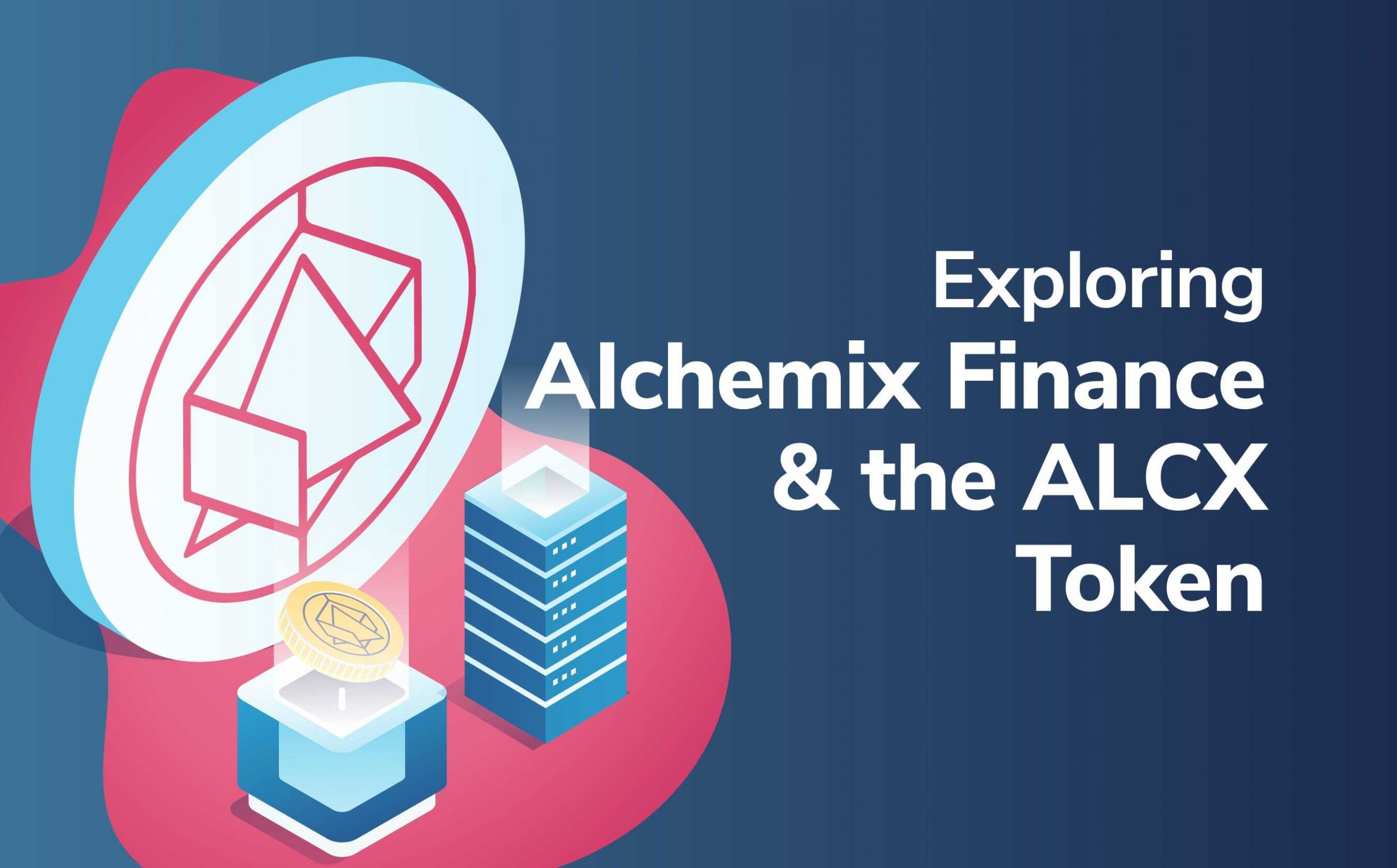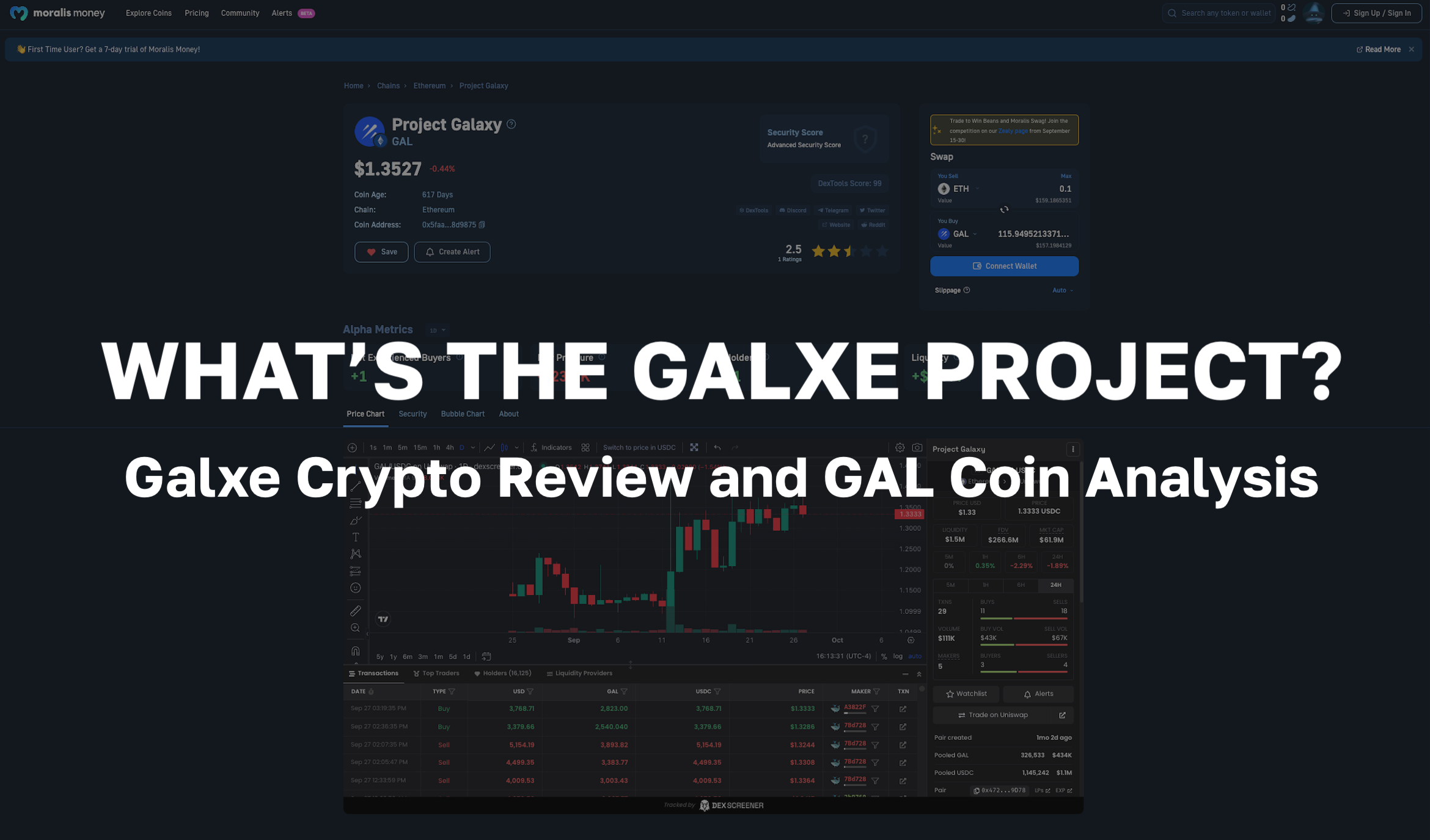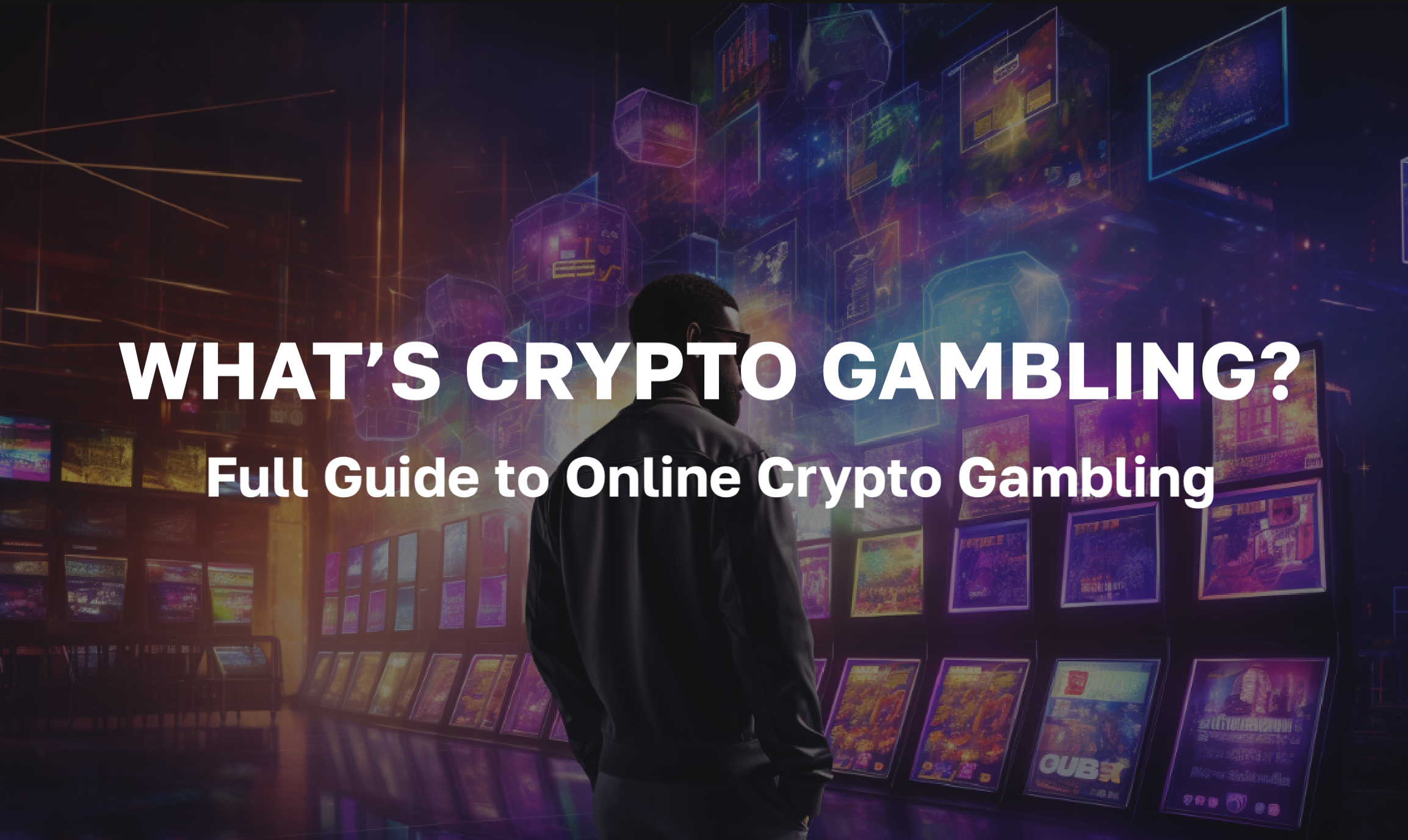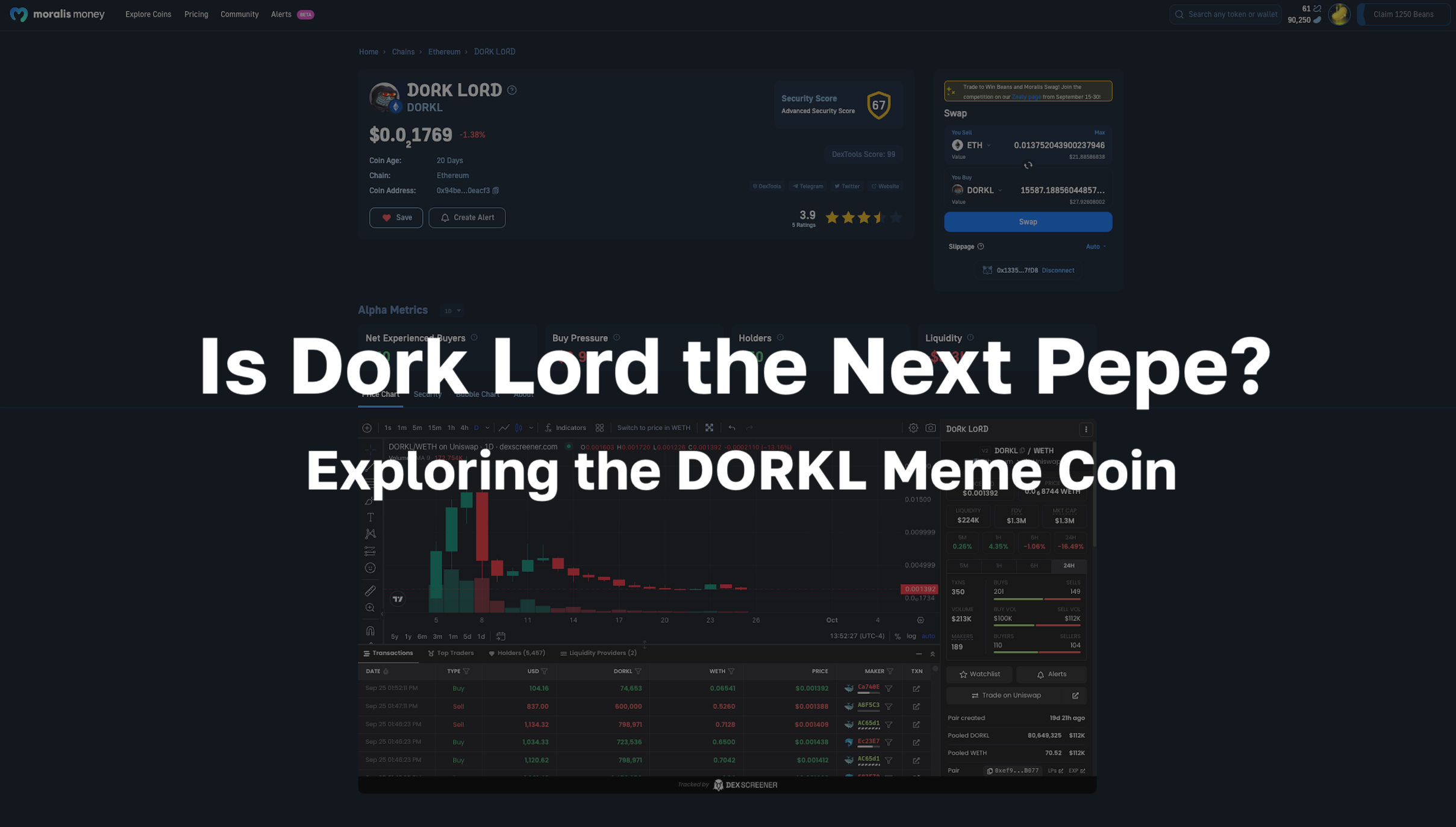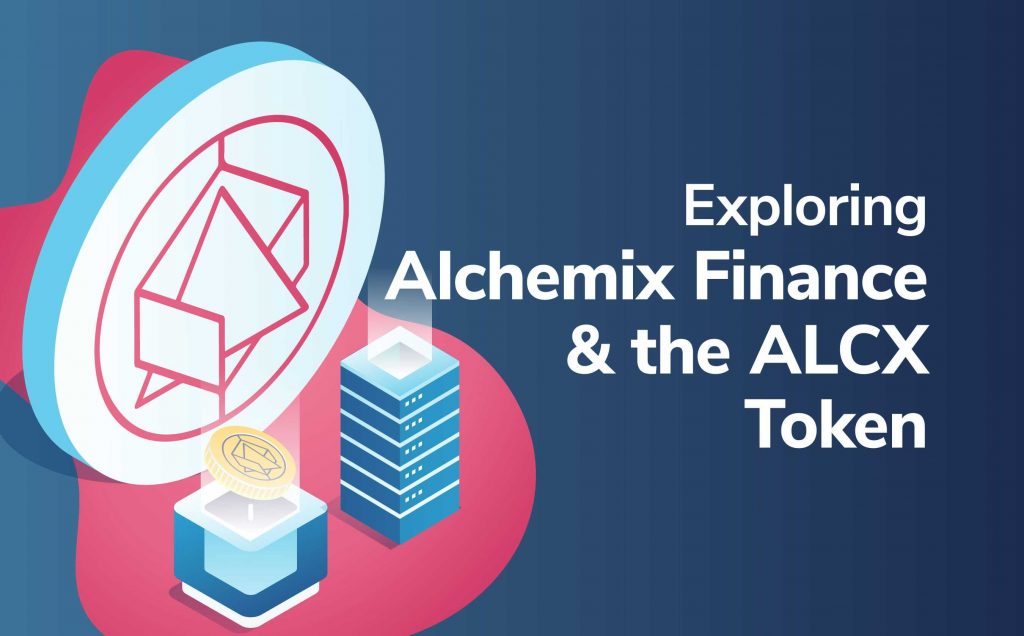
Alchemix Finance is a synthetic stablecoin and borrowing protocol on Ethereum. Alchemix offers instant, flexible loans that automatically repay themselves using a dual-token system. Moreover, the native ALCX token provides voting rights for platform governance. Also, users of the platform can stake the Alchemix stablecoin alUSD and other assets to earn rewards.
In this article, we are going to dive deep into the Alchemix Finance ecosystem, exploring the fundamentals of the project. Further, we’ll look at the roles and functions of the Alchemix token (ALCX) and the native synthetic stablecoin, alUSD. Additionally, we’ll discover the responsibilities of the governing Alchemix decentralized autonomous organization (DAO).
Alchemix Finance is operating on Ethereum, the second-largest blockchain after Bitcoin. For a deep dive into the origin and fundamentals of blockchain technology, see our Blockchain & Bitcoin 101 course. Then, our Ethereum 101 course is the perfect follow-on to discover how smart contracts took blockchain to the next level, creating a foundation for decentralized applications (dApps). For all things blockchain, no matter your age or background, Ivan on Tech Academy is waiting to welcome you into our community. Join over 30,000 students today!
What is Alchemix Finance?
Alchemix Finance is redesigning the potential of decentralized finance (DeFi) by offering instant, flexible self-repaying loans while creating synthetic tokens backed by future yield. Although currently only compatible with DAI stablecoin deposits as collateral, Alchemix Finance plans on making it possible for users to borrow the native synthetic stablecoin asset (alUSD) against a range of assets.
The Alchemix Finance protocol operates on the Ethereum blockchain with several interweaving components to its application. Alongside the Alchemix stablecoin (alUSD) and Alchemix token (ALCX), the Alchemix ecosystem includes platform vaults, farming opportunities, the Transmuter smart contract, and the Alchemix decentralized autonomous organization (DAO) and treasury.
Alchemix Tokens
The Alchemix ecosystem comprises two tokens, each as critical as the other to the smooth-running operations of the platform.
ALCX Token
The first token in the Alchemix ecosystem is the native ERC-20 Alchemix Token (ALCX). Alchemix clearly states that although the token holds responsibilities, it does not, in turn, guarantee any value. Holders of the ALCX token receive governance rights in the Alchemix decentralized autonomous organization (DAO). We’ll discuss the responsibilities and activities of Alchemix DAO later in the article.
The Alchemix token (ALCX) does not have a set maximum supply or hard cap, as the project employs a unique and strategic emission schedule over three years. With an initial pre-mine of 478,612 ALCX tokens, just over 22,000 of these were distributed to the Staking Pools in week one. The number of tokens distributed from then on will decrease by 130 ALCX tokens each week for three years.
The gradual tokenomic model uses a calculation of 2,393,060 ALCX tokens being in circulation within three years. Of the 2.3 million tokens, 15% (358,959 tokens) will be allocated to the Alchemix DAO Treasury. The decision surrounding the use of these tokens is determined by the ALCX token holder community. Moreover, an additional 5% (119,653 ALCX) of the token supply is in reserve by the Alchemix DAO Treasury as bug bounty rewards.
In March 2021, the ALCX token saw a new all-time high of $2,066.20, according to CoinGecko. At the time of writing, the ALCX token sits at around $378.
Alchemix Synthetic Stablecoin (alUSD)
The second token in the Alchemix ecosystem is the synthetic Alchemix stablecoin (alUSD) with a peg to the US Dollar. When users deposit DAI into the Alchemix platform, they receive alUSD in return. As per security measures on the platform, there are limits in place on the amount of alUSD that can be minted from DAI assets.
Using Chainlink oracles for price feeds, the Alchemix stablecoin tokenizes both the deposit and the future yield on the deposit too. alUSD is redeemable one-to-one for DAI stablecoins. The synthetic stablecoin is available to trade on various popular decentralized exchanges (DEXs), including Curve Finance and SushiSwap. In June 2021, Alchemix announced the release of alETH, a synthetic ETH token with a minimum of 400% collateralization ratio.
Alchemix Ecosystem
There are various components to the Alchemix ecosystem to offer a smooth decentralized automated loan lending and repayment experience. In short, users deposit DAI into the Alchemix vault. With a minimum 200% collateralization ratio, users can borrow alUSD against their deposit. The DAI deposits from users are then deposited into Yearn Finance’s yDAI vault. The yield generated from Yearn Finance then pays to reduce the overall global debt in the Alchemix system and is transferred to the Transmuter Contract. In turn, this reduces the depositors’ debt.
If users have taken out an alUSD loan, the yield from Yearn Finance repays the debt owed. Alternatively, if users have not taken out a loan, then the yield extends the users’ credit line. To unlock collateral, users can repay part of all of the debt. Alternatively, users are free to liquidate a portion or all of their collateral at any time. As such, any remaining alUSD debt can be instantly repaid using the DAI collateral deposit. Moreover, if users choose to repay their loan, they can do so in either DAI or the Alchemix synthetic stablecoin (alUSD).
Vaults
At the heart of the Alchemix Finance protocol are the vaults, operating through smart contracts. In the initial iteration, users can deposit DAI and alUSD stablecoins into the Alchemist.sol smart contract. DAI deposits are then transferred into the Yearn Finance yDAI vaults contract for yield. While Alchemix believes Yearn Finance is the safest choice of decentralized finance (DeFi) yield applications, there is a precautionary “emergency shutdown procedure” to be on the extra-safe side with users’ funds. Should such an occasion arise, all deposits in Alchemix vaults will be paused while users' funds from Yearn Finance are withdrawn. This allows users to “pay down their debt and exit the system safely”. In turn, this theoretically will reduce or mitigate any loss incurred.
The Alchemix vault displays the flexible line of credit available to users. The credit amount depends on how much DAI collateral is available (minimum 200%) and the yield earned through staking DAI with the protocol. Alchemix currently only accepts the DAI stablecoin as collateral. However, the project hopes to cater to a broader choice of stablecoins as collateral in the future.
If you want to kickstart your DeFi journey, the DeFi 101 course at Ivan on Tech Academy is the ultimate primer. Here, you’ll learn how to install and use MetaMask with popular decentralized finance (DeFi) protocols like Uniswap, Synthetix, and MakerDAO.
Then, be sure to check out our DeFi 201 course. This course teaches students about yield farming, crypto arbitrage, liquidity pools, and more!
Transmuter
The Transmuter is a pegging mechanism for synthetic tokens on Alchemix Finance using smart contracts. All harvested yield flows through the Transmuter, which helps maintain a guaranteed redemption of 1:1 for alUSD and DAI. User deposits also enter the platform via the Transmuter. Moreover, users can choose to stake the synthetic stablecoin in the Transmuter, which will automatically convert yield into the base asset (DAI). When staked, alUSD acts like a bond, eventually maturing into a base asset. When users decide to withdraw their converted DAI, the protocol burns an equivalent amount of the Alchemix stablecoin, alUSD.
Since a recent upgrade, the Transmuter protocol deploys a stream of capital into Yearn Finance’s yvDAI vault. This yield also goes towards boosting the yield of the DAI deposits in the Alchemix vault smart contract. This multiplies the amount of yield in the network, thus generating faster loan repayments. Moreover, Alchemix Finance keeps a five million DAI buffer in the Transmuter contract that does not go to the Yearn Finance yield contract. Instead, the buffer is in place to improve the user experience (UX) by eliminating the gas cost of calling the transmute function.
Farming
Alchemix Finance will provide yield farming opportunities using the ALCX token. 60% of the ALCX token distribution will go towards staking rewards over three years. After this period, the ALCX token will be subject to “minimally-viable tail inflation”. Furthermore, the inflation schedule for the ALCX token models that of popular decentralized finance (DeFi) protocol Synthetix.
Initially, there will be four incentivized liquidity pools. The first pool is an alUSD pool that enables liquidity providers (LPs) to stake alUSD and earn ALCX tokens. This pool aims to encourage the minting of alUSD tokens. Secondly, the alUSD-3CRV aims to incentivize deep liquidity on the Curve automated market maker (AMM) and help alUSD maintain a strong price peg. The third pool is for ALCX/ETH Sushiswap tokens, while the fourth pool is a simple ALCX pool that enables users to earn yield in the same asset. In the future, we can expect to see more liquidity pools added.
By allocating 60% of the token supply to yield farming, the platform aims to create a decentralized governance model that encourages platform participants to vote on proposals and protocol updates. Also, instead of using a vested premine for founding members, the team will gain access to a 20% allocation via an exclusive mining pool. This pool aims to provide an incentive for onboarding new developers.
Moreover, Alchemix is committed to an inflation schedule and reward reduction that prevents the collapsing in price of the native platform token while reducing farming rewards. The initial distribution of 22,344 ALCX tokens will be reduced by 130 tokens each week for the first three years. After this period, the distribution will reduce by 2,200 tokens per week.
Treasury
Of the yield collected from DAI deposits in the Yearn Finance yDAI vault, 90% goes directly towards reducing users’ debt positions in conjunction with the Transmuter pool. The remainder of the yield goes towards the Alchemix Finance decentralized autonomous organization (DAO) treasury. The treasury is responsible for funding the ongoing development and expenses of the Alchemix protocol. This includes server costs and frequent audits, in addition to the cost of future products. Moreover, the treasury wants to support development within the Ethereum ecosystem. Therefore, a percentage of income will go towards “gitcoin grants and other charitable programs”.
Initially, the funds will be under the management of the core Alchemix Finance team using a multi-sig wallet. However, the project aims to release full control of the funds to the Alchemix DAO in a three-phase transition. During the initial phase, the team will consult with the community about the designation of funds through forums and their Discord channel. In phase two, Alchemix will introduce the DAO voting platform Snapshot to allow governance members to vote without paying gas fees. In the third and final phase, Alchemix will transition to a fully operational on-chain DAO. This will allow ALCX token holders to propose and vote on the use of alUSD token funds through trustless cryptographic code.
Alchemix DAO
The Alchemix decentralized autonomous organization (DAO) is a community of enthusiasts working collaboratively to grow and develop the Alchemix ecosystem. The DAO also receives funding through the yield generated through the Alchemix protocol, split between the treasury funds. Whereas the treasury fund is responsible for covering the finances of operations, the Alchemix DAO focuses its funding on development. However, any movement of funds is subject to governance from the DAO.
The Alchemix DAO aims to fund blockchain developers looking to build decentralized applications (dApps) that will utilize the native synthetic stablecoin, alUSD. In turn, the DAO community members can vote on new projects to fund for development. Voting and managing the allocation of DAO funds will transition to on-chain governance as the platform develops.
Exploring Alchemix Finance, Alchemix Stablecoin (alUSD) & ALCX Token Summary
Alchemix Finance uses a dual-token system to offer a permissionless, open-source, secure loan protocol with automated repayments. Moreover, loan repayments are from platform yield generation by staking the DAI stablecoin with a minimum of 200% collateralization. As such, Alchemix Finance offers some of the most flexible loan repayment options in the decentralized finance (DeFi) space. Users can choose to repay loans with DAI, or the native synthetic stablecoin, alUSD.
Additionally, the second token in the Alchemix ecosystem is the ALCX token. Holders of the ALCX token will receive governance rights over the DeFi platform and treasury funds through the Alchemix decentralized autonomous organization (DAO). Moreover, as the Alchemix ecosystem expands and the alUSD token establishes itself as a standard settlement method in Ethereum-based decentralized finance (DeFi) protocols, the Alchemix DAO aims to support blockchain developers and add value to the broader DeFi ecosystem.
If you want to learn how to build decentralized applications (dApps) on Ethereum, Ivan on Tech Academy is the perfect starting point! Regardless of experience, we offer a range of courses to help you become blockchain certified. If you have zero coding experience, check out our Javascript Programming for Blockchain Developers course to learn the basics. Then, see our Ethereum Smart Contract Programming 101 and Ethereum Smart Contract Programming 201 courses to learn how to create and deploy your own smart contract-based applications using Solidity and Truffle.
Also, don’t forget to follow us on Twitter @Academy_IOT! We’d love to hear your thoughts about Alchemix Finance and the ALCX token!
